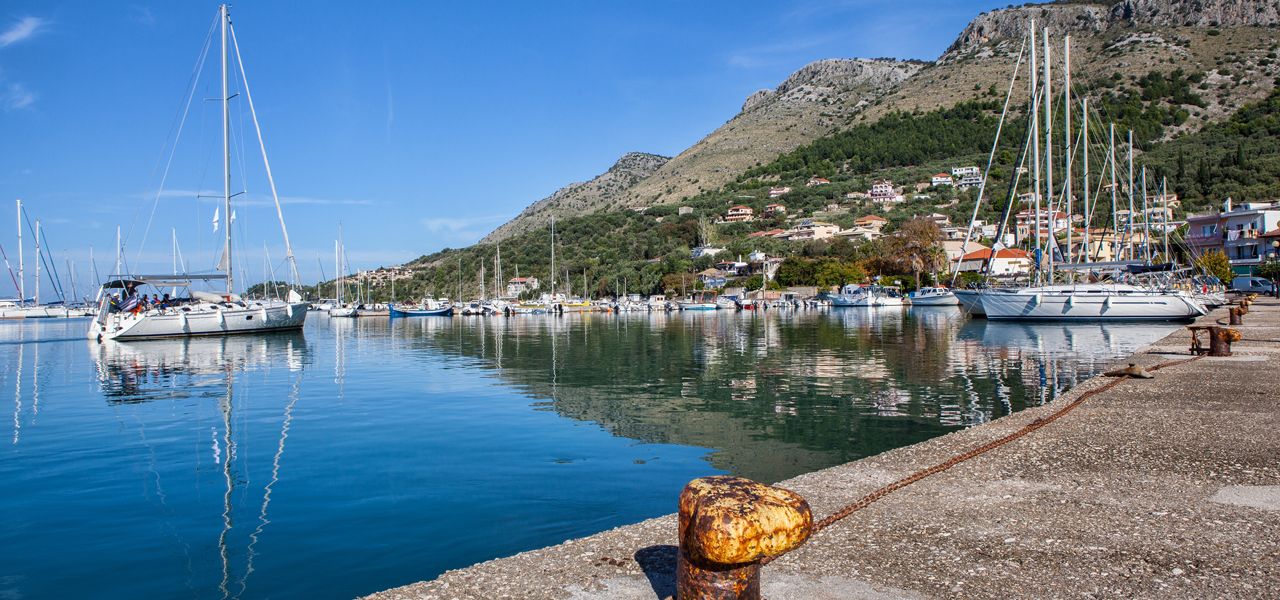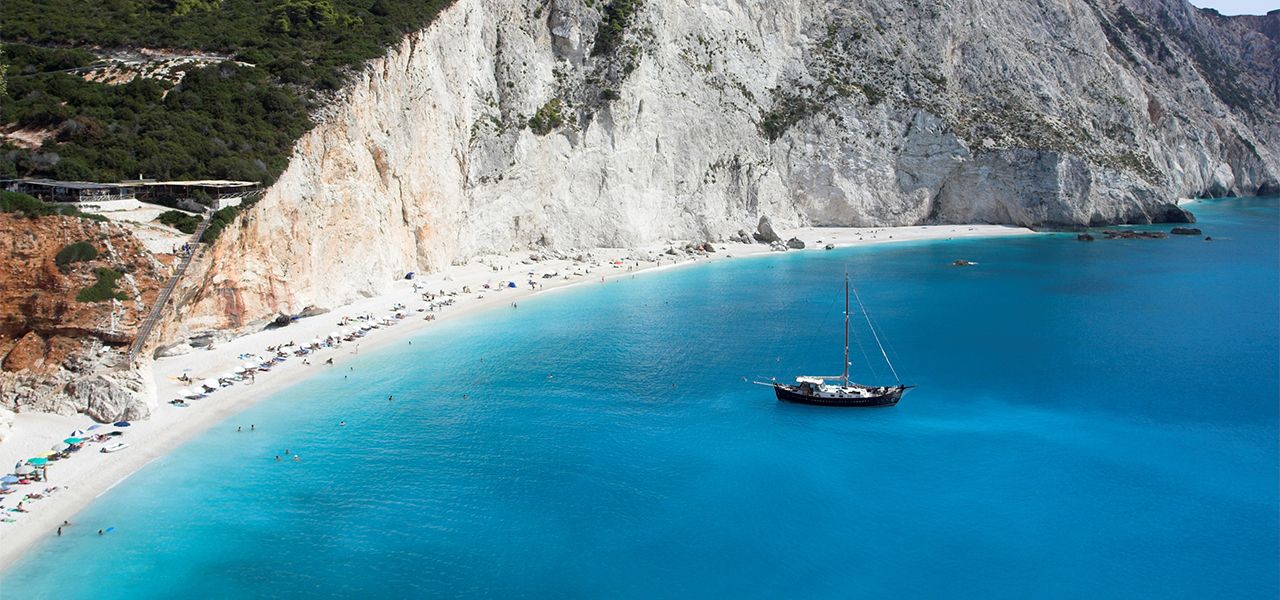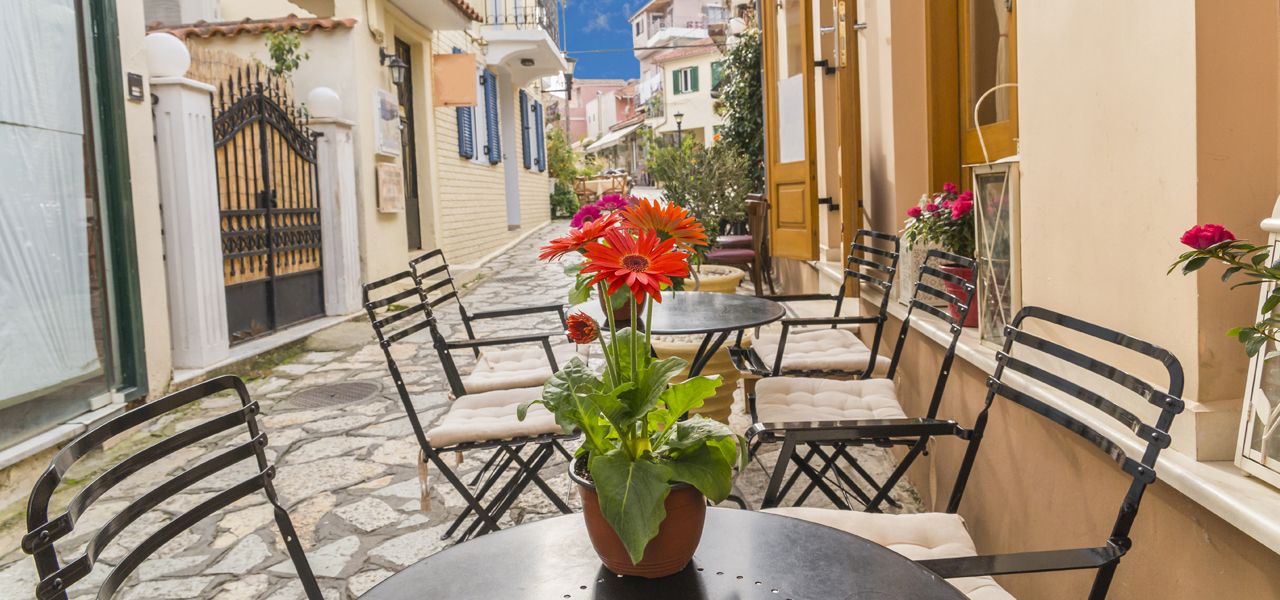You will see them, so the locals say. After you have left the Aktion airport you probably will. For, the flamingos, meaningful reminders as any other flying creature of our returning or forgotten destinations, perform many happy landings in the area, on the saline or alkaline waters of Amvrakikos. For those who know, this is not an unusual spectacle. The whole bay is huge waterbody, the largest natural gulf in Europe, shared by the Prefectures of Preveza, Arta and Aitoloakarnania.
It is a Natura 2000 site of great importance with more than 250 species, among them the most famous inhabitant, the Dalmatian Pelican, and this is one of its few breeding sites in the world. Often overlooked in favor of its islands neighbors and underrated, the whole area is, in fact, yet one of Greece’s fascinating regions, a mix of world – changing history, epic scenery and contemporary culinary delights, is ripe for exploration, to wherever the compass can possibly show. What implied here are hands behind the wheel and drives but, of course, this perfectly fits Aktion, because Aktion is not a final holiday destination per se, but it is a clever starting point, or gateway, for “different strokes for different folks” kind of thing road trips.
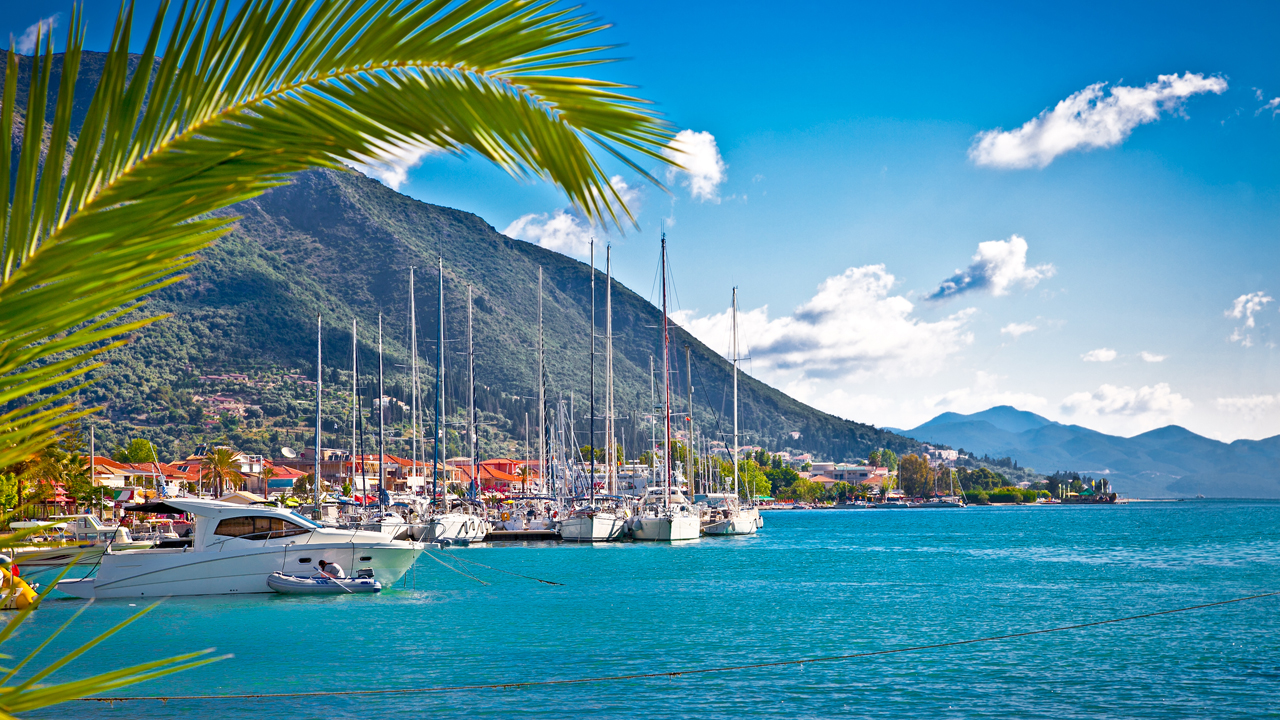
After all, not too many things in life are more exhilarating than a road trip. When the journey itself really IS the destination, a road trip is one exemplary way to realize “slow travel”; the key, here, is: no rush. Stopping to chat and know the locals, hide the map and improvise by taking detours, and to flee. It's a different fashion. It's not a to-do list. It's refreshing. Long gone are the years were road trips remained a classic Americana prerogative and the new travel trends promote investing time in getting to understand deeply a place. And you never get to know a country before you meet its history. Aktion, in this case, or better Actium as it was the name in antiquity can teach anyone a lot, for nothing can compete with the battle of Actium in the annals of naval battles, history boffins will say. Of course, because it was a game changer; after the battle of Actium and Anthony’s colossal defeat there, the world would not be the same ever again: the Roman Republic turned to empire, with all the subsequent consequences or influences on the course of the western civilization, and Cleopatra’s and Anthony’s followed suicides eclipsed the 4.000 glorious history of Egypt’s pharaohs.
A tipping point in history, showdown surely Shakespearian drama – worthy along with some dozen epic Hollywood productions, which blessed the area with a legacy; Octavian, emperor supreme thereafter, in a “no duty is more urgent than that of saying thanks” move, built a whole city here. Nikopolis (City of Victory, the Greek meaning), is probably the largest in size ancient city in Greece, but still, it’s not among the top ranked in culture lovers’ list, and even fewer are of its pivotal importance. With its extensive walls, the impressive Roman Odeon, seven notable Christian basilicas, the Roman tower, the theatre and of course the Augustus monument provides an intensive model for studying the development of the Roman residential concept; marking also the beginning of the Pax Romana surely deserved to be included in the tentative list of UNESCO World Heritage list.
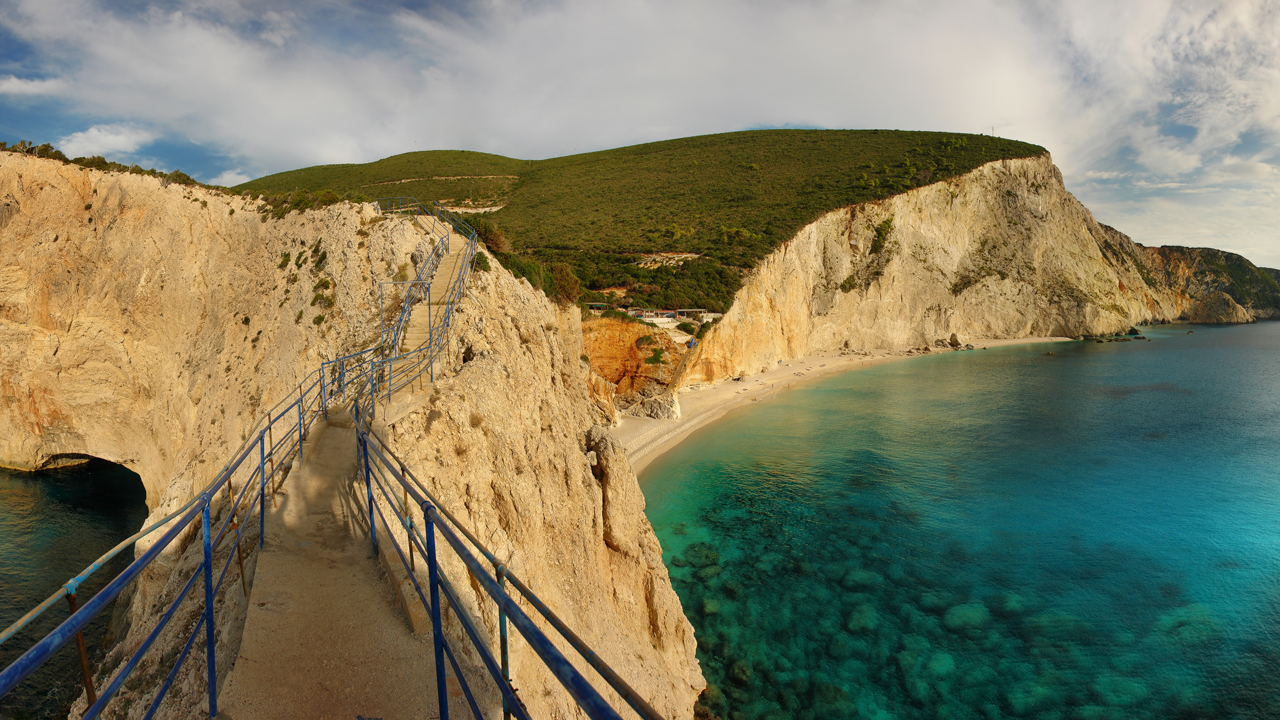
En passant to Nikopolis, which is reachable after a 15 minutes’ drive via the 3km only undersea tunnel in Greece, Preveza is not to be missed. Having developed out of all recognition in the last decades, sandwiched between the Ionian see and Amvrakikos, has become an attractive place to live and holiday, ready to seduce with its lovely jetty, yacht-filled marina and its culinary skills. And it’s there were the beach – lovers will start catching their mojo, for there is where the coastline begins: some 100km of coastline leading up to Syvota, Greece’s “little Caribbean” – with all due respect a poor nickname to describe its beauty. In between, rocky shores and sandy beaches; a most beautiful encounter between the land and the sea luring the senses to the route’s epic scenery stunning vistas and the fishing villages, glitzy marinas and buzzing old, historic towns like Parga, with its vibrant seafront lined with pastel-coloured houses, “the little Monte Carlo” of Epirus.
But nothing makes a more fitting memory from Pindus National Park and the Zagori area, the high basin of flysch between the Mitsikeli range on the west and the main Pindus range on the east. Landscape such as Byron loved; a great opportunity to experience the majestic wilderness, the primeval forests and the country’s old-world lifestyle, a realm of a bygone era; a 200km or so of unforgettable drives, up and down and in between ravines, pale blue rivers, striking panoramas, and off-roads to your heart’s content, the routes to mountainous Epirus is a road-tipper's fantasy land, were, most of the times words fail to describe its rugged beauty. Luckily enough, “Paddy” Leigh Fermor’s – one of the most influential travel writers of the 20th century – unequal writings about “sierra Zagora”, as he called it, come to rescue: “...You didn’t need wine there - the air made you drunk; and as for the shade, the grass, the trees and the water – why the water came gushing out of the living rock as cold as ice, you couldn’t drink it it was so cold, and you could drink it by the oka, and feel like a giant. Words failed them.”
It goes without saying that any traveler will have his personal preferences as to what makes a route actually swoon – worthy, but, with Aktion, here lies the biggest challenge; deciding which road to follow first. Of course the odds say that Lefkada is the obvious choice, and the truth is that Aktion is usually perceived as the island’s airport. But then again, the 40minutes that it takes to get there is also a road trip, for Lefkada, is the only Greek island accessible by road transport as it is tethered to the mainland by a causeway. Less insular as it is, is a bright summer hotspot for mainland Greeks, though in terms of foreign visitors – perhaps because it sometimes feels like part of the mainland - less touristy, fact, however, which attests to its unspoiled character. Nevertheless it’s as much Ionian as the others; as Elizabeth Longford wrote back in 1975, “Those who know any of the Ionian Islands will say that it cannot but be the brightest star in the galaxy, so beautiful does it seem: be it Corfu, Levkas, Ithaca, Cephalonia, Zante or another. Those who know them all will nominate them together as the Islands of the Blessed...”
But Lefkada, magically surrounded by 24 or so tiny sleepy islets, among them the famous Onassis’ Scorpios, has its own perks: a triple distilled feel-good factor, Aeolian breeze and rays to nourish the most sweet freedom feeling to anyone’s highest comfort zone

Undoubtedly, all familiar ingredients of a perfect Greek holiday are on the shelves here and life is a breeze on Lefkada, amid the scenery of the Odyssey. And, yes, like a thoroughbred Ionian island, Lefkada, too, claims its fair share of Odysseus. On the Academia battlegrounds, quite few scholars, among them German archaeologist Wilhelm Dorpfeld come to support that Lefkada was the real site of Odysseus' home, rather than Ithaki.
Is Nydri, as they say, the burial grounds of the mythical king? But you don’t have to wonder about that. Because there, on the favourite promenade of the inhabitants, when the still moonlight becomes a perfect mirror on the lake – like harbour’s waters all you have to worry about is whether you won’t fall in love. For as the locals say, people have a habit of falling in love on Lefkada, but primarily with Lefkada. Primarily, if not for the history, certainly you’ll fall for the beaches and the bays that curve like a gorgeous woman’s cleavage. So be ready. Check all devices are fully charged: the extraordinary setting on this Ionian part land commands constant snapping and sharing. And there’s one more reason too: according to numerous reports flamingos also frequent the shores here.
Municipality of Aktio Vonitsa
At Aktio Airport, based near the city of Vonitsa of the Municipality of Aktio Vonitsa, in the Region of Western Greece, a great number of visitors from different countries arrive every year to enjoy the many endless beaches, the prehistoric, historical, archaeological and religious monuments, as well as the unique natural beauty of our place, full of contrasts, colours and smells.
The Municipality of Aktio-Vonitsa is situated in the north-western part of Akarnania, deriving from the merger (2011) of the former Kapodistrian Municipalities of Anaktorion, Medeon and Paleros, each one having its particular individual characteristics, and includes the three historical towns of Vonitsa, Katouna and Paleros, and a plethora of picturesque historical settlements.
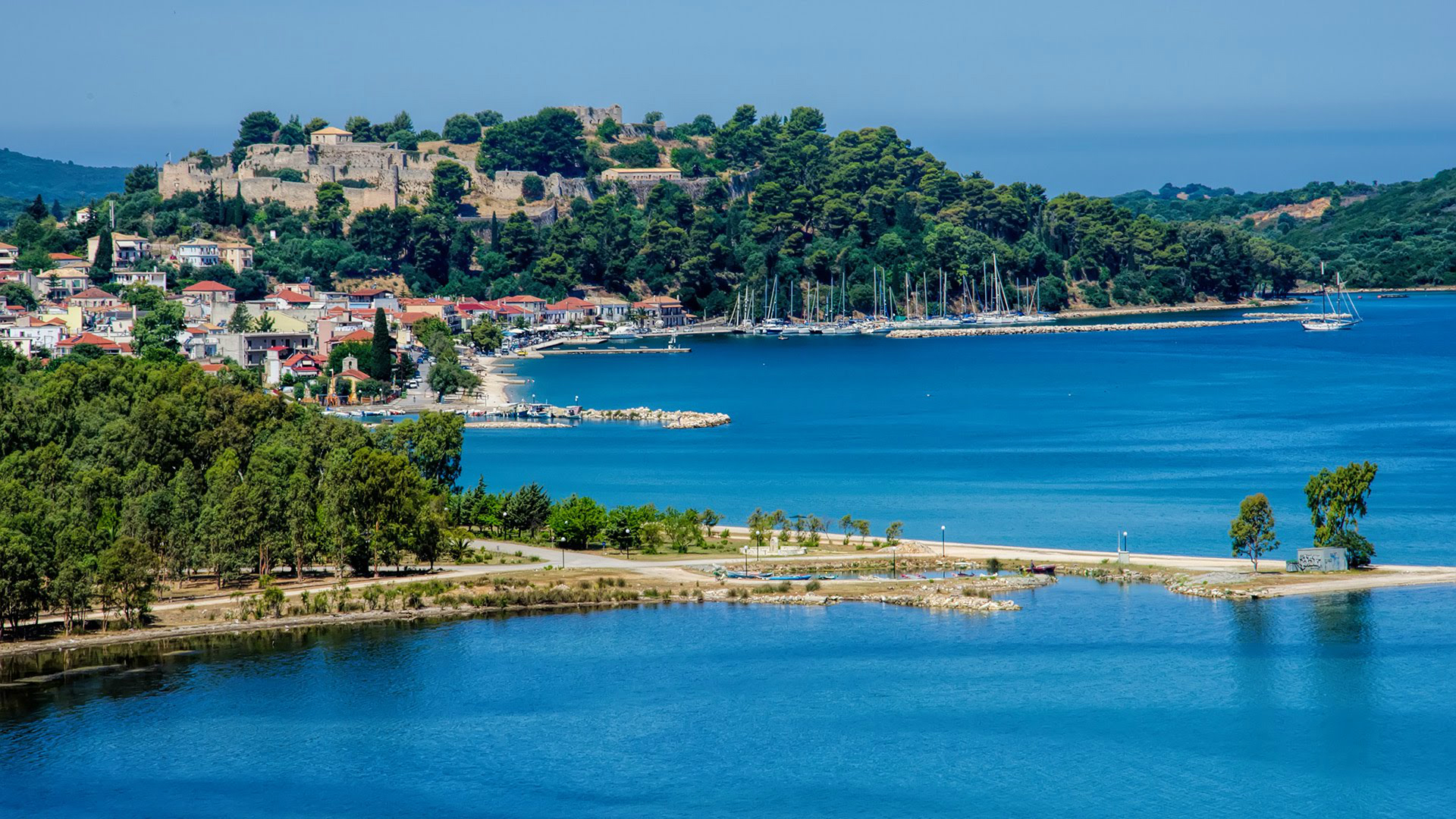
For the longest part of the year, the area lends itself for a tour at the beautiful mountainous landscapes of Xiromero and alongside the unique beauties of the Ionian Sea with its picturesque villages, while the ever-quiet Amvrakikos Gulf, with the sandy beaches inviting for a plunge in its blue waters or exploring the area.
The first stopover in Aetoloakarnania from the historic Aktion is the town of Vonitsa at 10 minutes distance, a beautiful, picturesque town with low houses, picturesque alleys, beautiful neighbourhoods and its imposing castle dominating the town from the hill. Its beach is beautifully linked to the unique beauty isle of Koukoumitsa, welcoming the visitors and inviting on a journey into the dream and in time by filling the eyes with colours and unleashing all senses.
The castle of Vonitsa, a stone giant and one of the best castles in Greece, makes it one of the most beautiful cities of Aetoloakarnania, combined with the isle of Koukoumitsa.
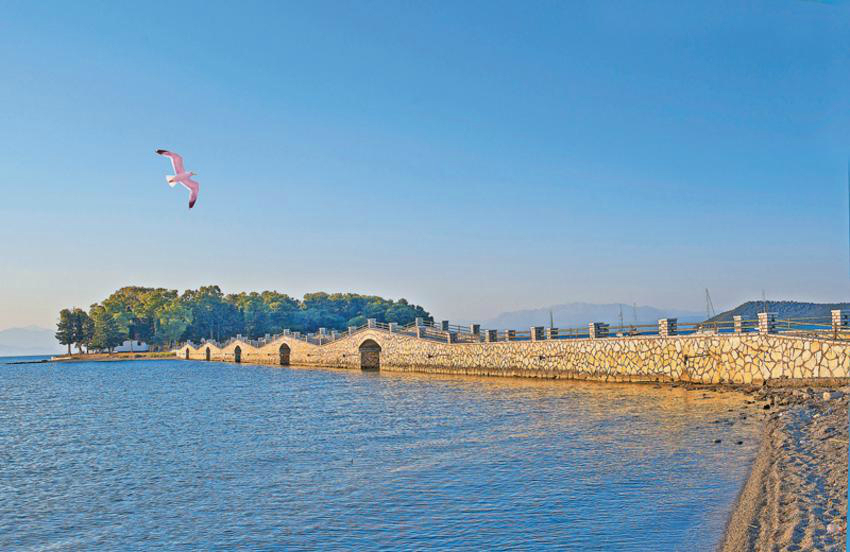
Saltini and Koukoumitsa, as well as the whole area, lend themselves for walking, swimming, bicycle rides and are a favourite meeting place, a lively and vibrating part of the local community. The area hosts the facilities of the Sailing Club of Vonitsa that conducts sailing competitions, provides training courses in Optimist type boats and is a favourite meeting place for residents and visitors.
Leaving the seat of the Municipality, there are two options leading to mountain or sea.
The road leading to the beaches of the Ionian Sea and in particular to Paleros is 17 km long. A possible stopover may be made at the beautiful and picturesque Monastiraki to see the waters of Kefalovrysos sprouting in the village square and make a guided tour to the natural "nerotrives" (small waterfalls for carpet cleaning) and the nearby famous spring of "Corpi" with the excellent quality water of the same name; the amazing, delicious meats of the area is also a challenge to taste. Time permitting one can walk up to Sepetos waterfall.
The beautiful town of Paleros is bathed in the waters of the Ionian Sea, overlooking Scorpios and Meganissi. It has beautiful, clean beaches with crystal blue waters and presents a great tourist development, the largest in Aetoloakarnania, having a great harbour with a large boat capacity.
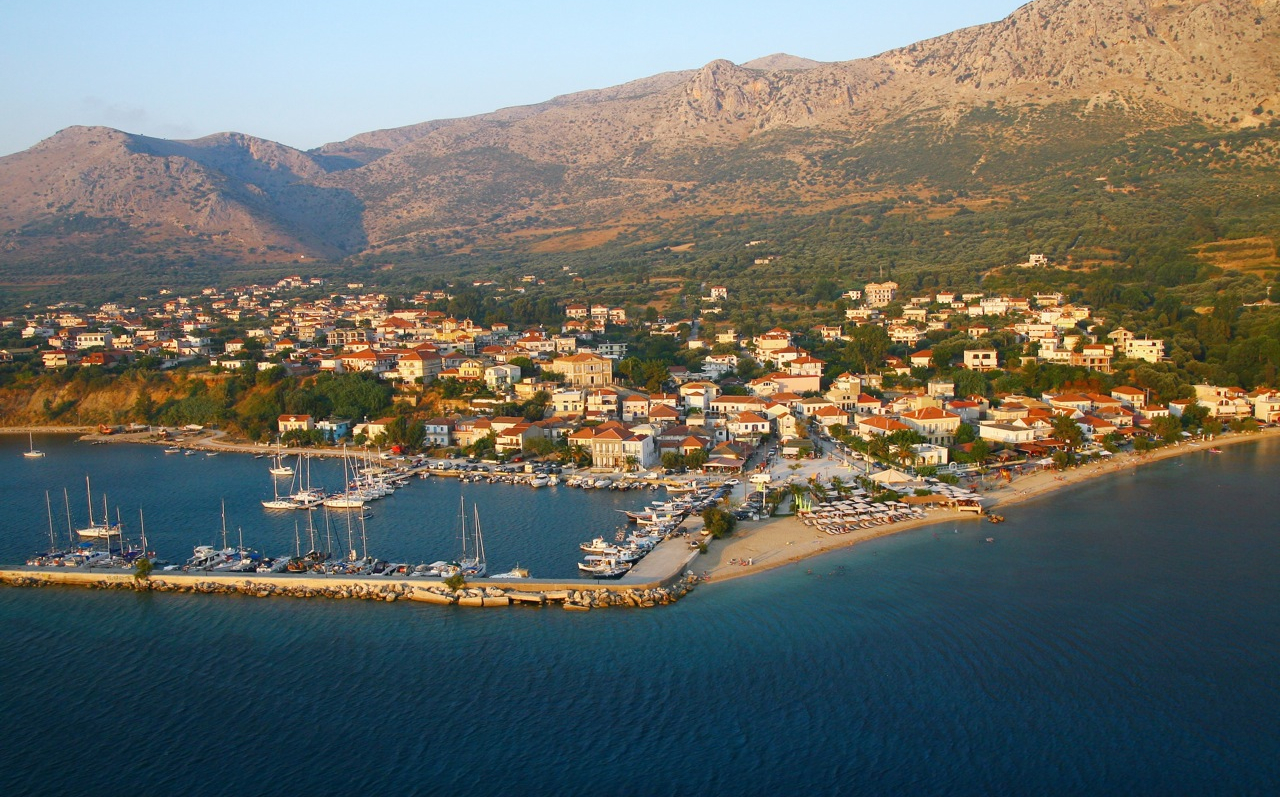
The first visit is to one of the best beaches in Greece, Vathyavali, which is located a few kilometres outside of Pogonia. Between Paleros and Pogonia, the largest beach of the Municipality, the Potamaki beach, is located, the small arched stone bridge being its hallmark. It has an organized camping site and is ideal for water sports with many recreational areas.
Paleros has fully equipped hotel units with the largest number of bed places in the Western Sterea region, and several furnished apartments. It also has the only private marina, one of the first ones in Greece, with sailboats arriving all year round.
Paleros harmoniously combines the traditional elements such as the Ragos Mansion, with remarkable businesses that are active in tourism and international collaborations such as the Nielson and Thomas Cook companies.
In Paleros, the visitor can take canoeing, diving, wind surfing, water skiing courses or rent a boat and tour the coasts and the opposite islands.
Continuing our trip along the road around Paleros, the visitor can meet other beautiful coastal villages such as Mytikas, Astakos and then the historical capital of the prefecture, the sacred city of Mesolonghi with its glorious history, the unique lagoon and the 'pelades" (reed huts inside the lagoon).
To the mountainous side of Vonitsa, the visitor will meet the ancient city of Thyrrion with the archaeological museum thereof that embraces the entire history of Akarnania.
The distinct, proud beauty of Xiromero is depicted in all its splendour in the Katouna area, which is 32 km away from Vonitsa, with the wild rocky mountains, the green valleys and the river of Nissa that soothes the wilderness of the Acarnanian stone masses. The trademark of Katouna is the imposing historical church of Aghios Athanasios, which dominates the central square, while at its highest point there is a small pine-tree forest that lends itself for walks and activities.
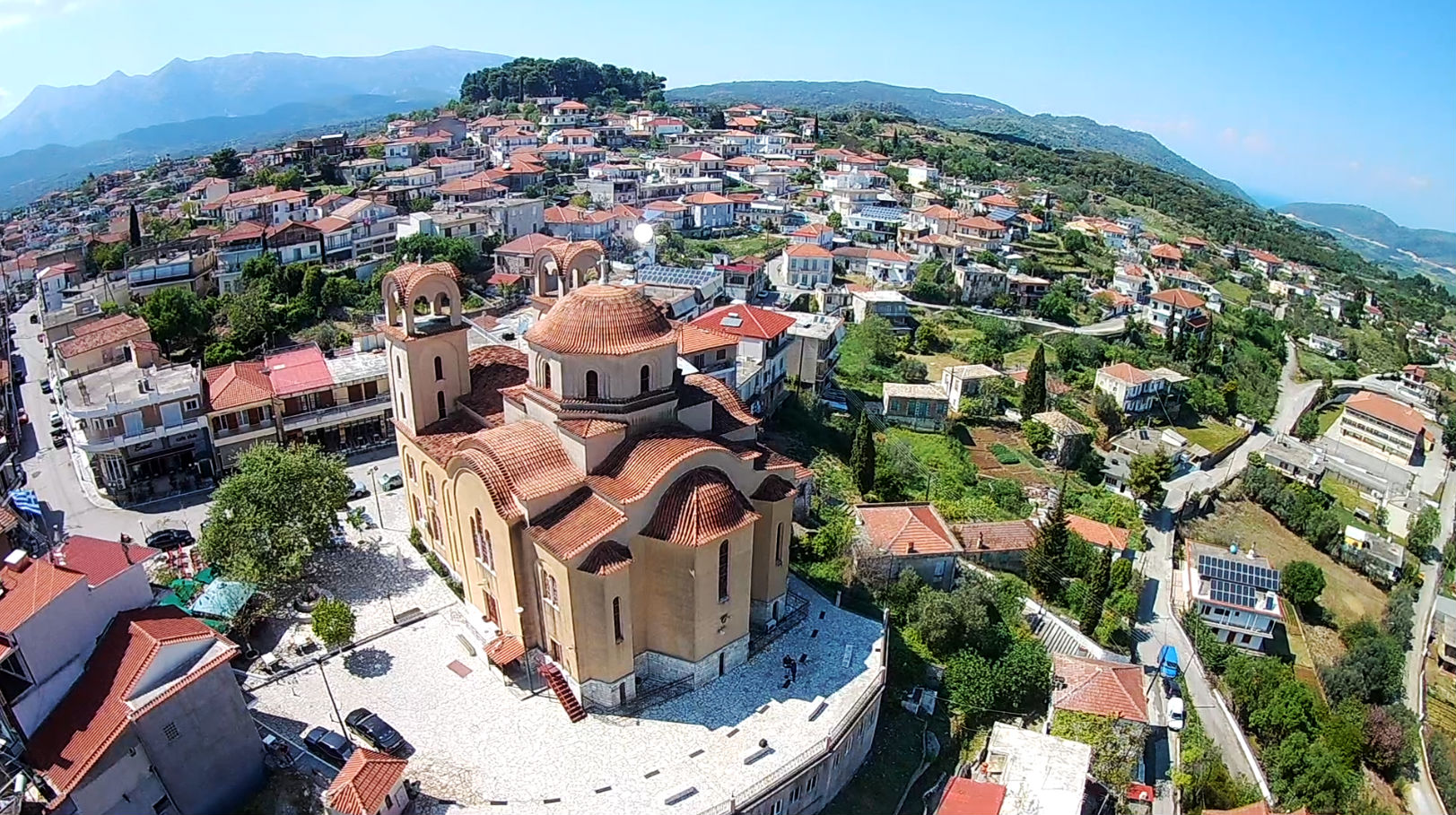
Katouna is located in the centre of Xiromero on a hill of the Acarnanian mountains at an altitude of approximately 340 m. From the beautiful Bastouni, a Katouna Square site, one may gaze and enjoy a beautiful view from the Amvrakikos Gulf, Loutraki, Lake Amvrakia to the opposite mountains of Vealora and Petala.
The summer gem of Katouna on the Amvakikos Gulf is the settlement of Loutraki, just 10 km away, to which many inhabitants move and live during the summer while at the same time they deal with their farms.
The climate, as well as the climate of Xiromero inland, is considered one of the coolest in the summer months.
Also near Katouna, only 9 km away, there is a settlement inhabited by the well-meaning refugees deriving from Asia Minor and Pontus that gives the visitor the chance to admire the well-preserved monastery of Aghios Nikolaos.
The area is famous for the local meats, milk and cheeses, as well as the traditional sweets such as revani, while residents stand out for their hospitality, valiance and candour, features that distinguish the Xiromero residents.
Continuing our trip, we meet the city of Amfilochia and further to the inland the urban centre of the prefecture, Agrinio, the largest city of Aetoloakarnania, which is situated near the river Acheloos, a lively monument of nature, the well-preserved ancient theatre in Stratos and an excellent archaeological museum in the heart of the city.
In the beautiful Municipality of Aktio - Vonitsa and in its dozens of settlements, land and water, history and legends combined uniquely, make up the image of Aetoloakarnania, create a unique environment with habitats, thermal springs and waterfalls, with paths, archaeological sites, Byzantine monuments, but also with clean beaches that make the place a unique and invaluable one and trigger every visitor to explore it.
